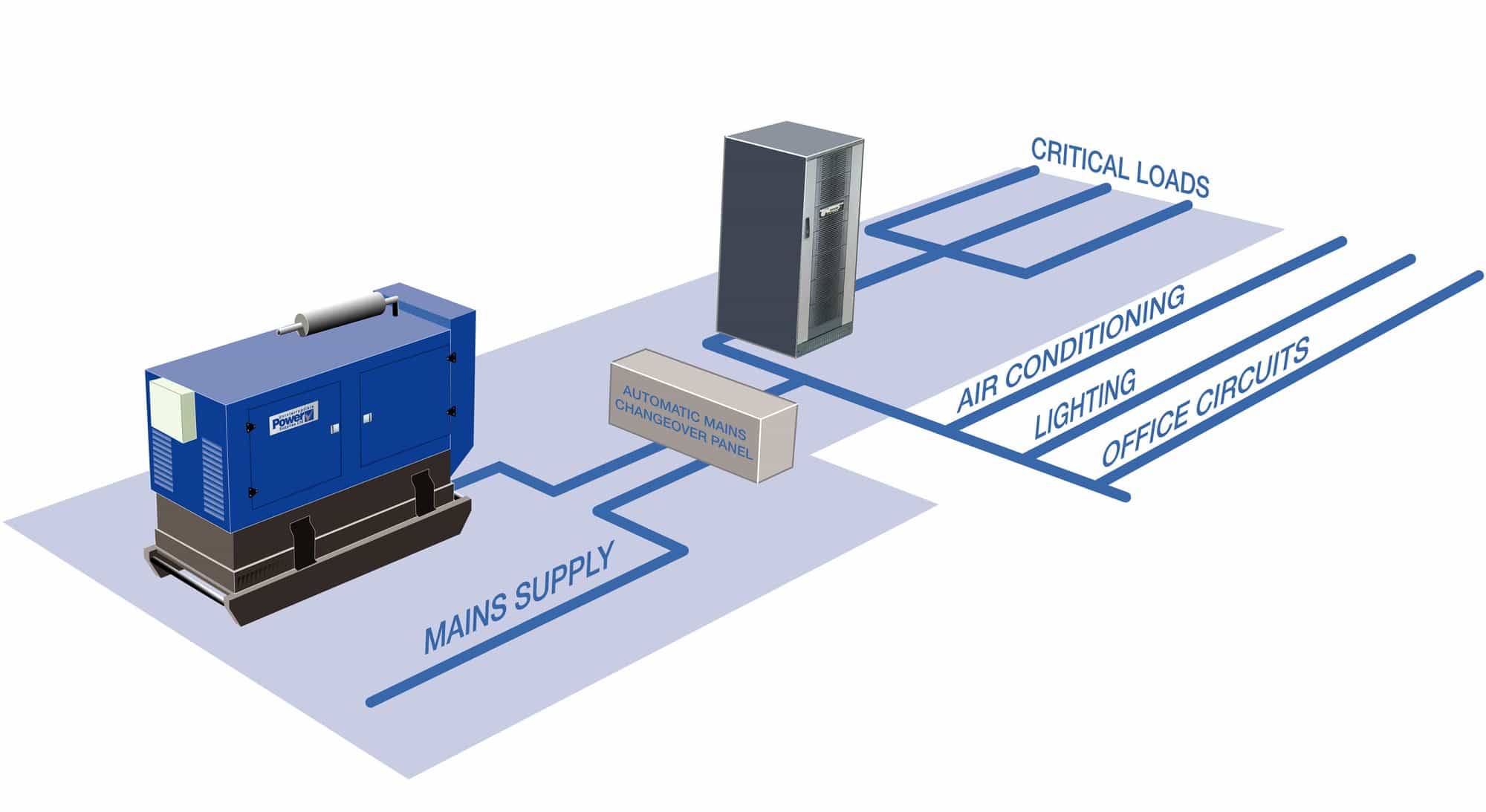In March 2015, Arrowe Park Hospital in Wirral suffered a massive power outage. These power problems caused operations to be cancelled and ambulances to be diverted. Although all wards and clinical areas were served by an emergency backup power supply and continued to function normally, the incident highlights the critical dependence of medical environments on a clean, uninterrupted power supply.
This dependence is driven by two power vulnerabilities. The first relates to the use of sensitive electronic equipment for operations, and for patient monitoring and treatment. The second arises from the essential role of IT and communications equipment to manage patient records, schedule appointments, allocate resources and perform other administrative functions.

Legislative requirements for medical environment backup power supply
Accordingly, legislation exists that a hospital backup power supply must comply with, to ensure power protection and continuity throughout different power loss scenarios. IEC 60364-7-710 applies to electrical installations in medical locations, to ensure the safety of patients and medical staff. Its requirements mainly cover hospitals, private clinics, medical and dental practices, health care centres and dedicated medical rooms in the workplace.
Health Technical Memorandum HTM06-01 (Part A) provides guidance for all works on the fixed wiring and integral electrical equipment used for electrical services within healthcare premises. It should be applied to all forms of electrical design work from greenfield sites to modifying an existing final subcircuit. Part B addresses the operational management and maintenance of the electrical service supply and distribution within any healthcare facility.
Both documents provide guidance to healthcare premises managers on how European and British electrical safety standards such as the IET Wiring Regulations BS7671, the Building Regulations 2000 and the Electricity at Work Regulations 1989 can be used to fulfil their duty of care in relation to the Health and Safety at Work etc Act 1974.
This legislation demands that in all medical locations where an isolated power supply is installed – defined as Group 2 and Group 5 by BS 7671 – power for life-supporting equipment must be restored within 0.5 s of a power interruption. It also states that “Certain microprocessor controlled equipment may require a no-break power supply”.
Uninterruptible power supplies and standby generators as backup power supply solutions
Uninterruptible power supplies from a reputable UPS supplier can successfully deliver the no-break power capability demanded by the legislation, while also protecting all the sensitive medical, IT and communications equipment from the dangers of supply power disturbances during normal mains operation. However, a power cut lasting for several hours or more rather than just a few seconds is always possible and must be allowed for.
This means that a backup power supply solution that is truly resilient and sufficient for a medical centre’s needs should comprise an uninterruptible power supply and standby generator working in partnership with one another. The UPS system provides the power filtering and no-break capability, then if the power outage duration starts to threaten the UPS battery autonomy, the UPS power supplies can signal the standby generator to start, and allow it sufficient time to come on-line and synchronise smoothly.
KOHLER Uninterruptible Power Ltd can supply integrated UPS generator packages that meet the particular needs of each user; we ensure that the UPS power supplies and generator products are not only correctly specified as independent parts, but also configured to work smoothly with one another as a complete backup power supply solution.
For more information regarding any of our UPS power supply products or services, you can get in touch with KOHLER Uninterruptible Power via our contact page or call us on 0800 731 3269.






